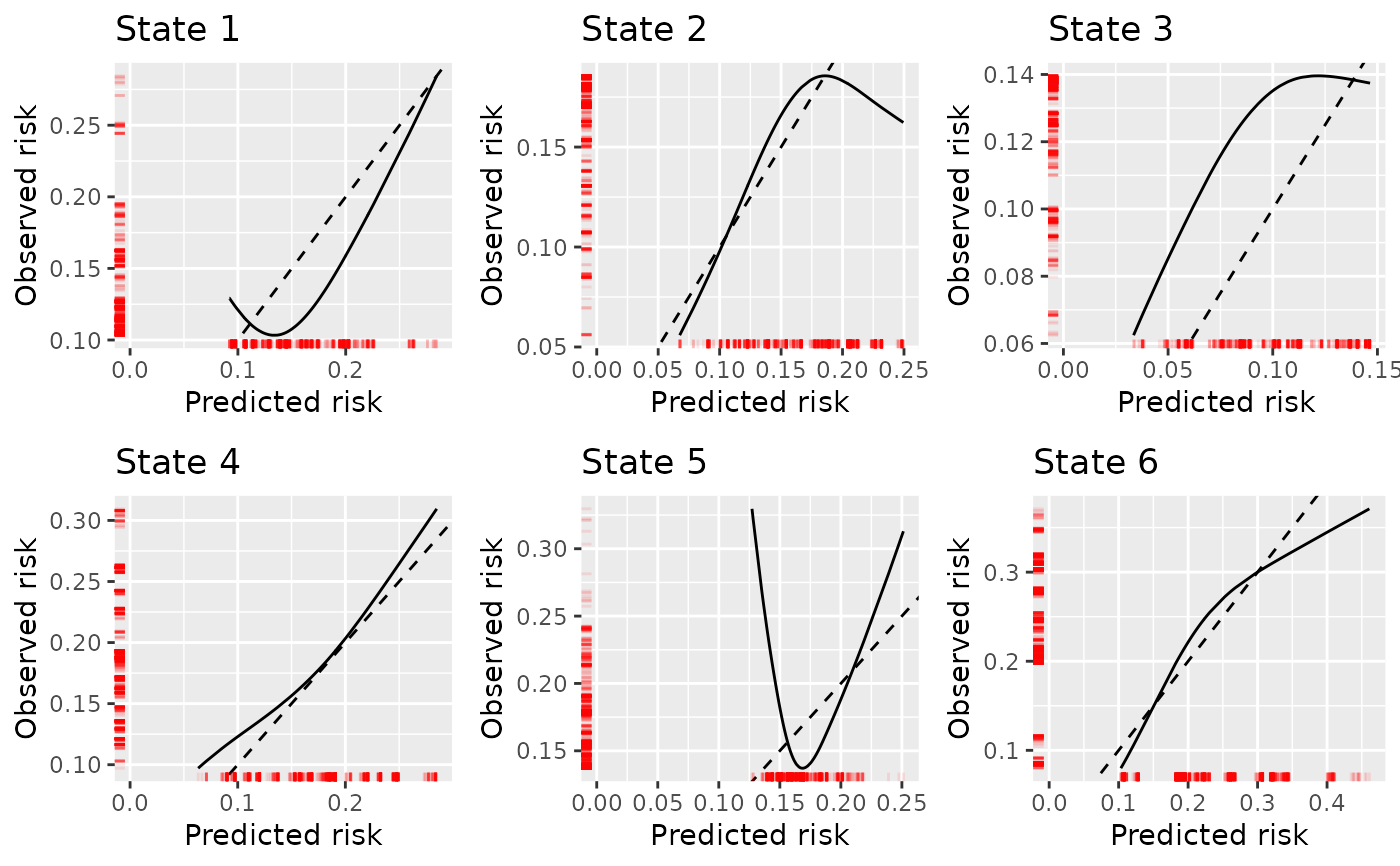Plots calibration curves for the transition probabilities of a multistate model
estimated using calib_blr.
Usage
# S3 method for calib_blr
plot(x, ..., combine = TRUE, ncol = NULL, nrow = NULL, transparency.rug = 0.1)Arguments
- x
Object of class 'calib_blr' generated from
calib_blr.- ...
Other
- combine
Whether to combine into one plot using ggarrange, or return as a list of individual plots
- ncol
Number of columns for combined calibration plot
- nrow
Number of rows for combined calibration plot
- transparency.rug
Degree of transparency for the density rug plot along each axis
Value
If combine = TRUE, returns an object of classes gg, ggplot, and ggarrange,
as all ggplots have been combined into one object. If combine = FALSE, returns an object of
class list, each element containing an object of class gg and ggplot.
Examples
# Estimate and plot BLR-IPCW calibration curves for the predicted transition
# probabilities at time t = 1826, when predictions were made at time
# s = 0 in state j = 1. These predicted transition probabilities are stored in tps0.
# Extract the predicted transition probabilities out of state j = 1
tp.pred <- dplyr::select(dplyr::filter(tps0, j == 1), any_of(paste("pstate", 1:6, sep = "")))
# Now estimate the observed event probabilities for each possible transition.
dat.calib.blr <-
calib_blr(data.mstate = msebmtcal,
data.raw = ebmtcal,
j=1,
s=0,
t = 1826,
tp.pred = tp.pred,
w.covs = c("year", "agecl", "proph", "match"))
# These are then plotted
plot(dat.calib.blr, combine = TRUE, nrow = 2, ncol = 3)
